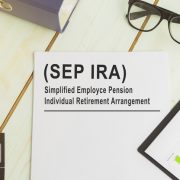Little-Known Facts about Self-Directed IRAs
When it comes to Self-Directed IRAs, you may know a lot about the basics. You may know that a Self-Directed IRA is an avenue for easily investing in non-traditional retirement assets like real estate, precious metals, private LLCs, and much more. But do you know the little details that can sometimes make a Self-Directed IRA strategy special? Here are some of our favorite little-known facts that may make you think about your retirement strategy in a new light:
Fact #1: Joint ventures and partnerships.
Here’s one of our favorite little-known facts: with a joint venture and/or a partnership, you may be able to use your IRA to work with someone who would otherwise be considered a “disqualified person.” How does this work? After all, if you’ve followed our blog, you know that we’re always explaining that the disqualified person rules are set in stone and that no investor should try to violate them.
Well, in this case, a joint venture or partnership can go on so long as the partnership occurs “at the time of acquisition.”
Fact #2: Rules in Real Estate IRAs.
For many investors, the idea of holding real estate within a retirement account is a huge boost to their confidence. After all, many investors rely on the stock market and its various swings for their returns. Putting real estate within Self-Directed IRAs gives an investor a chance to put a real asset within their retirement account—and often an asset that generates a generous amount of income.
But if you haven’t opened one of these yourself, there are some little-known facts when it comes to the rules that determine how you work with a Real Estate IRA. Here are some of them:
- Purchasing a property from yourself or disqualified person(s) is prohibited. That means that you can’t interact with your personal holdings if you’re transacting with an IRA.
- You will actually not be managing, repairing, or servicing the property yourself. Tenants would go through a property manager who can handle that for you.
- All legal documents regarding the real estate will be vested in the name of the IRA, not your own personal name.
Fact #3: Checkbook control.
For investors who are concerned about working through a Self-Directed IRA administration firm to handle a wide degree of investments, there’s another option that offers a tremendous amount of flexibility: checkbook control. In this case, checkbook control refers to using a Self-Directed IRA that holds a single member LLC. While the IRA will technically own the LLC, the checkbook control goes back to you, the IRA holder, which allows you to make checkbook decisions for the LLC. For example, if you want to use an LLC to make fast investments, such as a piece of real estate that needs to receive an offer in a hurry, you can accomplish this through checkbook control.
Fact #4: Diversification.
Okay, maybe diversification isn’t such a “little-known” fact about IRAs. But you’d be surprised at how many people don’t know that their retirement funds can hold alternative asset classes like gold, real estate, single member LLCs, and joint ventures. This diversification allows investors to expand the range of their retirement strategy, diversify their risk, and ultimately, build a retirement portfolio that’s sustainable beyond the next five years. With the cash flow that comes from real estate, for example, an IRA can receive a large amount of funds that keep the retirement account building.
Interested in learning more about Self-Directed IRAs? Contact American IRA, LLC at 866-7500-IRA (472) for a free consultation. Download our free guides or visit us online at www.AmericanIRA.com.








